1960 marks the fifteenth year in the production of Roosevelt Dime. Much like the past versions, this coin is sought after not just for its oldness but also for its silver content. With this 1960 Dime Value Guide, let’s get into the factors that might decrease or increase this coin’s value.
1960 Dime Value Overview

As per our research, below is the estimated price for the 1960 Roosevelt Dime. The chart details the lowest to highest grades.
| Mint Location | Mintage | Coin Series | Estimated Value |
| Philadelphia | 70,390,000 | 1960 P 10C MS | $2.00 to $55.00 |
| 1960 P 10C MS FT | $20.00 to $3,000.00 | ||
| Denver | 200,160,400 | 1960 D 10C MS | $2.05 to $80.00 |
| 1960 D 10C MS FT | $20.00 to $1,450.00 | ||
| San Francisco | 1,691,602 | 1960-S 10C (Proof) | $3.75 to $350.00 |
| 1960-S 10C, CAM (Proof) | $6.00 to $275.00 | ||
| 1960-S 10C, DCAM (Proof) | $12.00 to $400.00 |
The 1960 Roosevelt Dime is pretty standard, with around 272 million coins produced. This aspect makes its base price reasonably low, going from $2 to $12. That said, the market provides outliers from these estimated prices, which you’ll get to know below!
It is worth noting that the estimated melt value of the 1960 dime currently sits at a modest $1.70. This conversion is based on the current market value of silver, the primary component of this particular coin.
1960 Dime Details
- Category: 10-Cent Piece (Dime)
- Material: 90% Silver, 10% Copper
- Weight: 2.50 grams
- Obverse and Reverse Designer: John R. Sinnock
- Diameter: 17.9mm
- Fineness: 0.900
- ASW: 0723oz
- Edge: Reeded
The Roosevelt Dime has circulated since 1946. It’s the sixth dime design and is still produced and used to this day, although the composition changed from 90% silver to a copper-nickel clad in 1965.
The iconic Chief Engraver John Sinnock almost didn’t design the hub for the Roosevelt Dime. There are some creative differences from the Commission of Fine Arts during the designing process. However, with the right changes, the design was up for production, featuring the following elements:
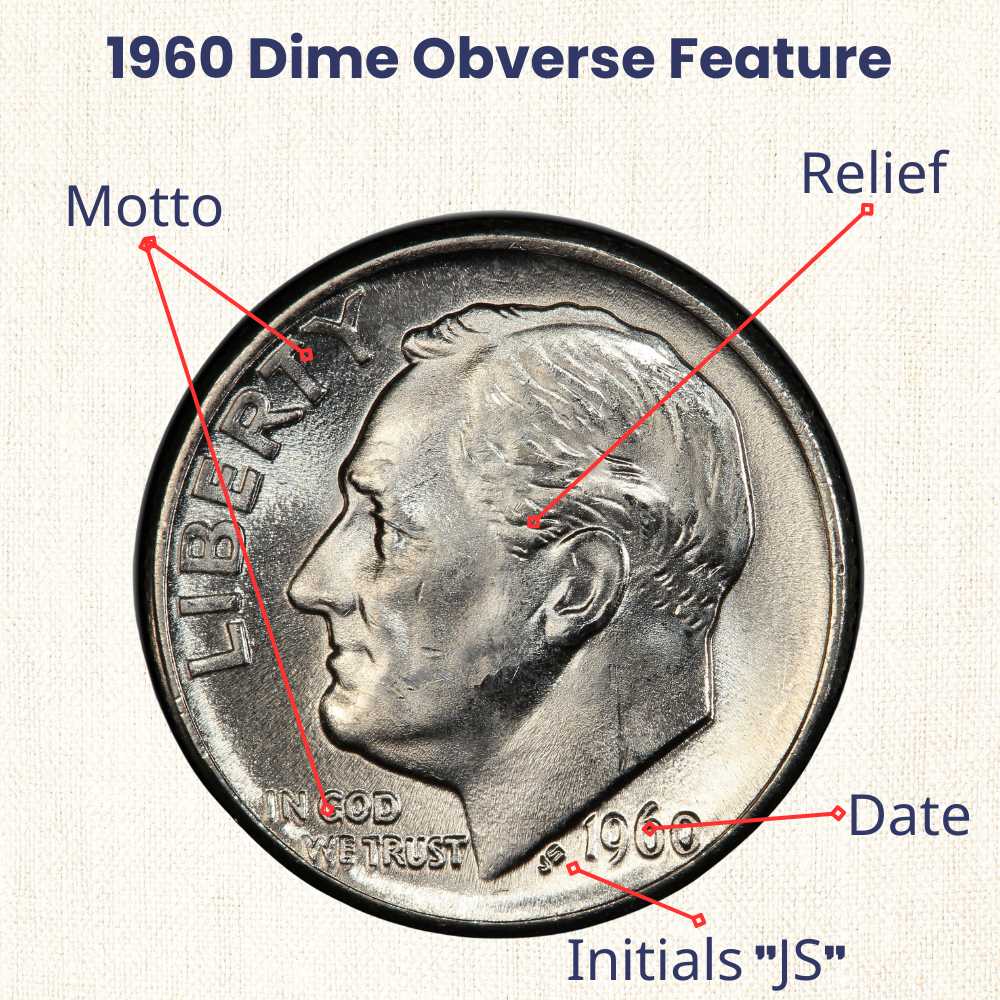
The obverse side of the coin depicts Franklin D. Roosevelt’s portrait, accompanied by the phrases ‘LIBERTY’ on top and ‘In God We Trust’ in the lower left. The right side of the coin includes details such as the year it was minted and the signature of designer John Sinnock in the form of his initials, ‘JS.’
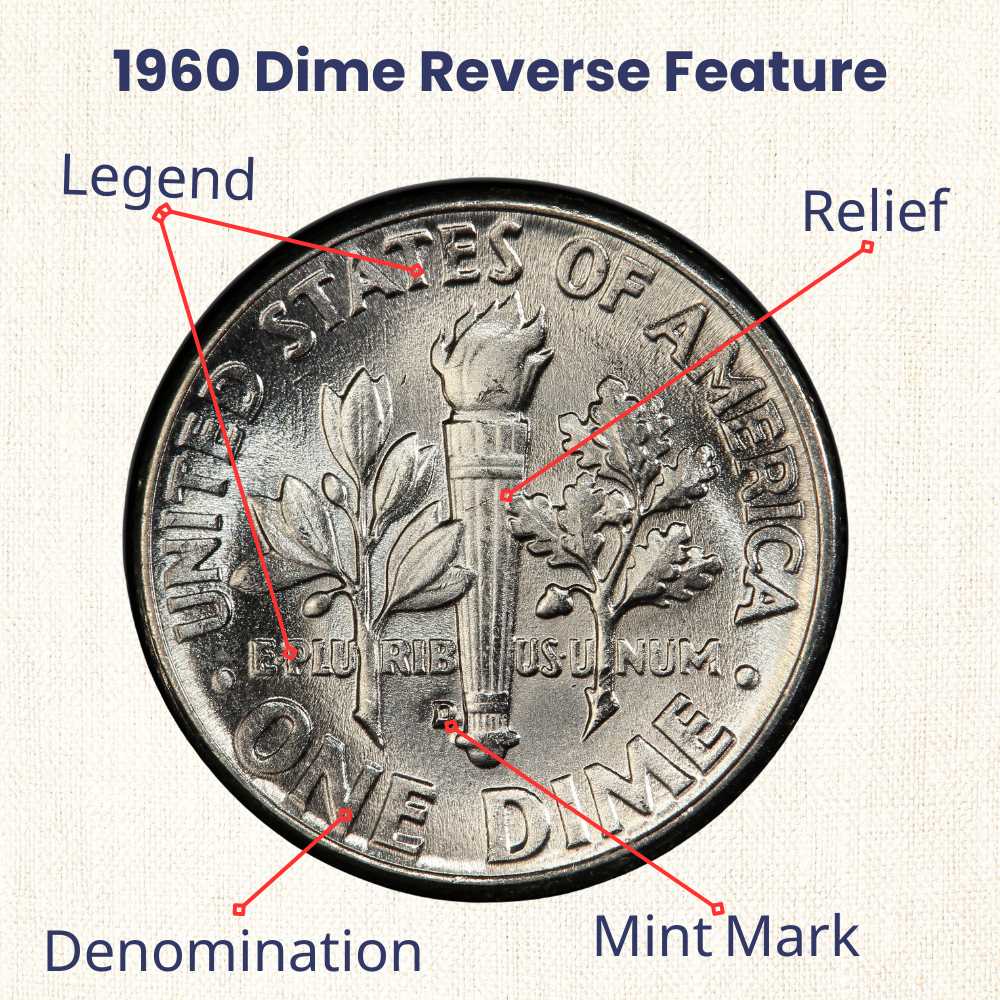
The back of the coin showed a standing torch symbolizing freedom, with olive and oak branches beside it. The mintmark also appears in the lower left beside the torch.
The words ‘E PLURIBUS UNUM’ appeared in the center, spaced irregularly as it gets cut off by the torch and branches. The country name ‘UNITED STATES OF AMERICA’ on the top and ‘ONE DIME’ on the bottom lined the curved borders, divided by small dots in between.
How Much Is A 1960 Dime?
The 1960 Dime production yielded a substantial quantity of coins for the market. Not just that, most of the processes are almost the same between the two central mint locations.
| 1960 Regular Strike Dime Value Chart | ||
| Grading | 1960 P Dime | 1960 D Dime |
| Good | $2 | $2.05 |
| Fine | $2 | $2.05 |
| Extremely Fine | $2 | $2.05 |
| AU 50 | $2 | $2.05 |
| AU 58 | $2.50 | $2.55 |
| MS 60 | $3.50 | $3.50 |
| MS 61 | $3.75 | $3.75 |
| MS 62 | $4 | $4 |
| MS 63 | $5 | $5 |
| MS 64 | $10 | $10 |
| MS 65 | $15 | $15 |
| MS 66 | $25 | $25 |
| MS 67 | $55 | $80 |
As you can see, whether it’s from Philadelphia or Denver Mint, there is no significant price gap except for the MS-67 grade, which has a $25 difference.
1960 P Dime Value and Auction Records

Despite being hoarded in their uncirculated state, many of the 1960 P Roosevelt Dime are sold for their melt value in the later years. That said, enough coins survived, which makes them very common. So, the marketplace for this mint location has a price point of $2 to $55.
Most of the 1960 P Dime has a grade of MS-67 and below. According to the census, only one coin has a grade of MS-68. However, no price point has been stated.
Despite having a maximum estimated price of $55, some coins in the auction have been sold higher than that. For example, this MS-67 coin from Heritage Auctions was sold for $150 in 2007. Almost three times the estimated price!
1960 D Dime Value and Auction Records
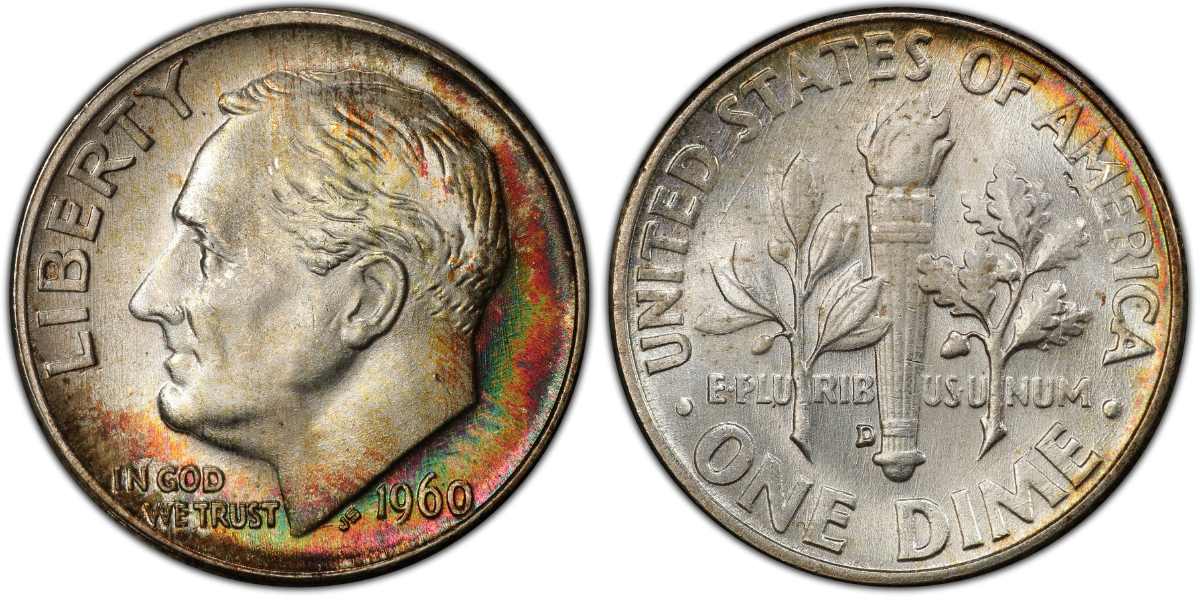
Despite producing the most coins for this year, the dimes from the Denver Mint have a higher estimated price at $2.05 to $80. This is due to its lower amount of graded uncirculated dimes than the Philadelphia Mint.
When it comes to an MS-68 coin, the NGC Census listed that there are three coins graded. However, no estimated price or auction records are currently available.
That said, some of the highest graded D Dime show excellent conditions that they are considered as MS-67+. Some of these coins can go up to upwards of $400! Such as this MS67+ coin sold for $763.75 by Heritage Auction in 2015.
1960 Dime Full Torch (FT) Worth
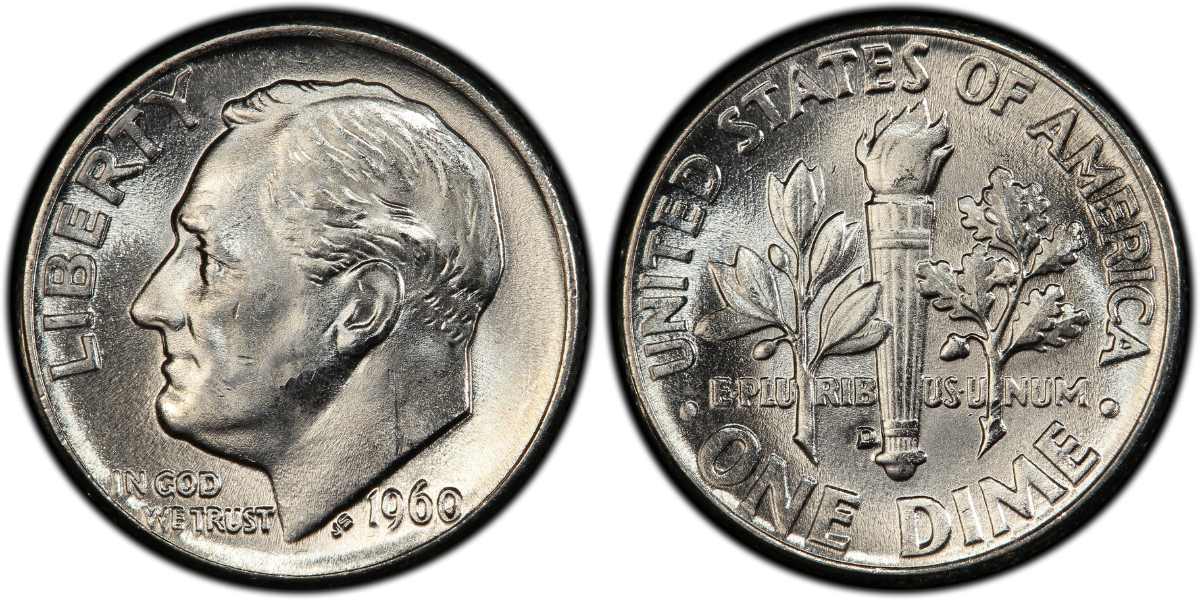
The Full Torch (FT) is a unique strike character reserved for the Roosevelt Dime. Much like its predecessor, the Full Band (FB), this designation relies on the reverse side of the coin.
With the Full Torch strike, the dime will display full and distinguishable lines on the torch centerpiece. The result is an excellent strike quality that is highly sought-after by collectors. If you want to learn about this striking character, check out this guide.
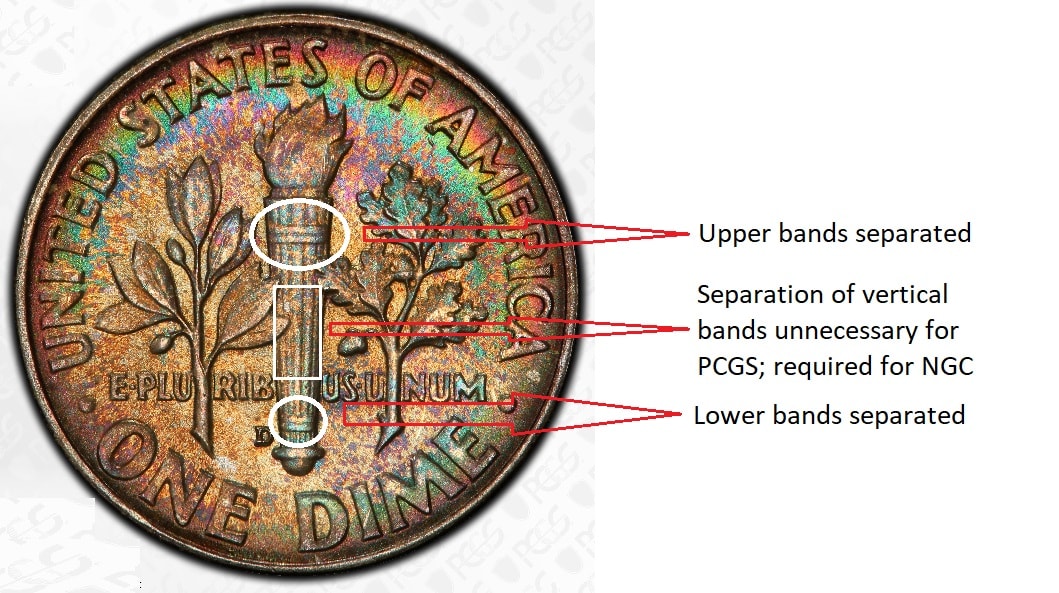
Dimes are not required to be in Mint State to receive the FT designation. However, it’s common for most who meet the qualifications to be in Mint State. These designations do not apply to Proof dimes, as they are typically assumed to have been struck well.
| 1960 MS FT Roosevelt Dime Value Chart | ||
| Grading | Philadelphia | Denver |
| MS FT 64 | $20.00 | $20.00 |
| MS FT 65 | $30.00 | $30.00 |
| MS FT 66 | $75.00 to $115.00 | $60.00 to $110.00 |
| MS FT 67 | $255.00 to $3,000.00 | $265.00 to $1,450.00 |
Full Torch (FT) Dimes from the Philadelphia Mint are generally worth more than those from Denver. The 1960 FT P Dimes are valued between $20 to $3,000, while the D Dimes range from $20 to $1,450.
As the D Dimes are produced more, it’s no surprise that it has a higher number of graded coins. Thus, it’s lower in worth than the P Dimes. According to the graded coins census, the P Dime only has 318 coins graded versus the 382 graded D Dimes.
1960 S Proof Roosevelt Dime Value
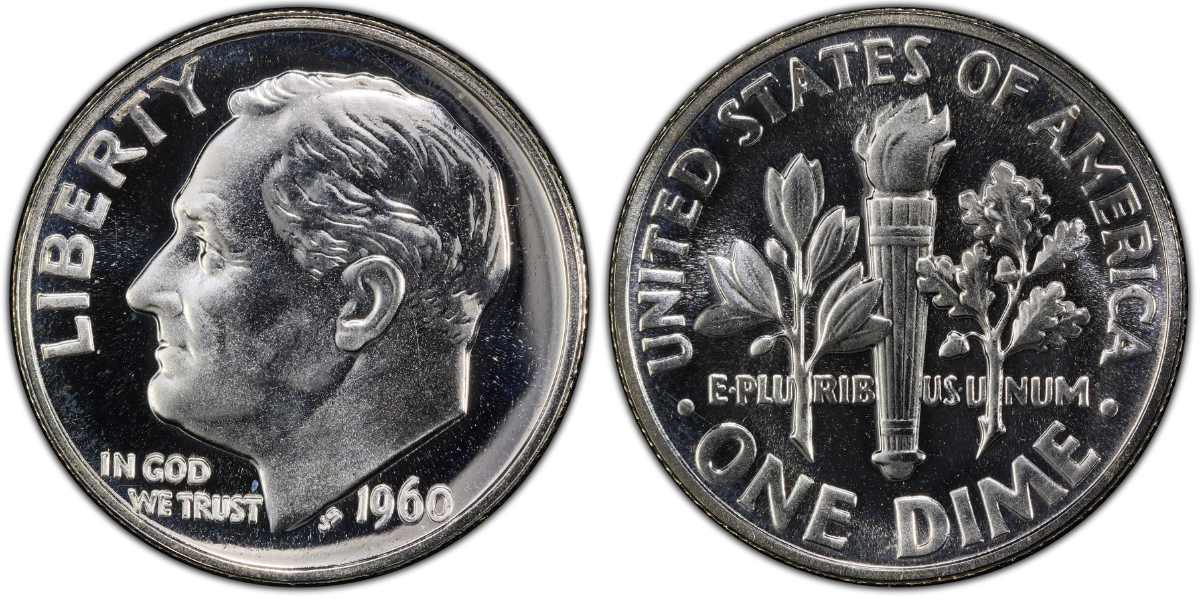
Proof refers to the polished coinage mostly used for testing the dies and master hub for coin production. With their higher strike quality and polished surface, coins with this designation can have a higher value than the regular strike.
Far from the low-proof production in the early 50s, the start of the 60s is welcomed with a higher coin production. In 1960, more proof sets were sold than ever, and these coins are still widely available in near-perfect MS-69 grading. The number of examples with Cameo and Ultra Cameo finishes is also higher compared to previous years.
| 1960 Roosevelt Dime PF Value Chart | |||
| Grading | Proof (PF) | PF Cameo (CA) | PF Ultra Cameo (UC) |
| MS PF 60 | $3.75 | / | / |
| MS PF 61 | $4.10 | / | / |
| MS PF 62 | $4.75 | / | / |
| MS PF 63 | $5 | $6 | $12 |
| MS PF 64 | $7.50 | $10 | $20 |
| MS PF 65 | $10 | $17 | $30 |
| MS PF 66 | $14 | $25 | $40 |
| MS PF 67 | $20 | $35 | $60 |
| MS PF 68 | $40 | $60 | $115 |
| MS PF 69 | $160 | $275 | $400 |
| MS PF 70 | $350 | / | / |
With its high amount graded, you will notice that these proof coins have lower prices. For example, the MS-60 Proof coin has a base price of $3.75. Compare that to the year before with a base price of $4.50.
Currently, 8,357 1960 Proof Dimes are graded by the NGC. It makes the coins much more common, surpassing the number of Full Torch coins. This makes their highest estimated price $350 for the MS-70 grade.
That said, some proof coins, due to their exceptional condition or rarity, sell higher Take this MS-70 1960 Dime, which sold for $493.50 by Heritage Auctions as an example.
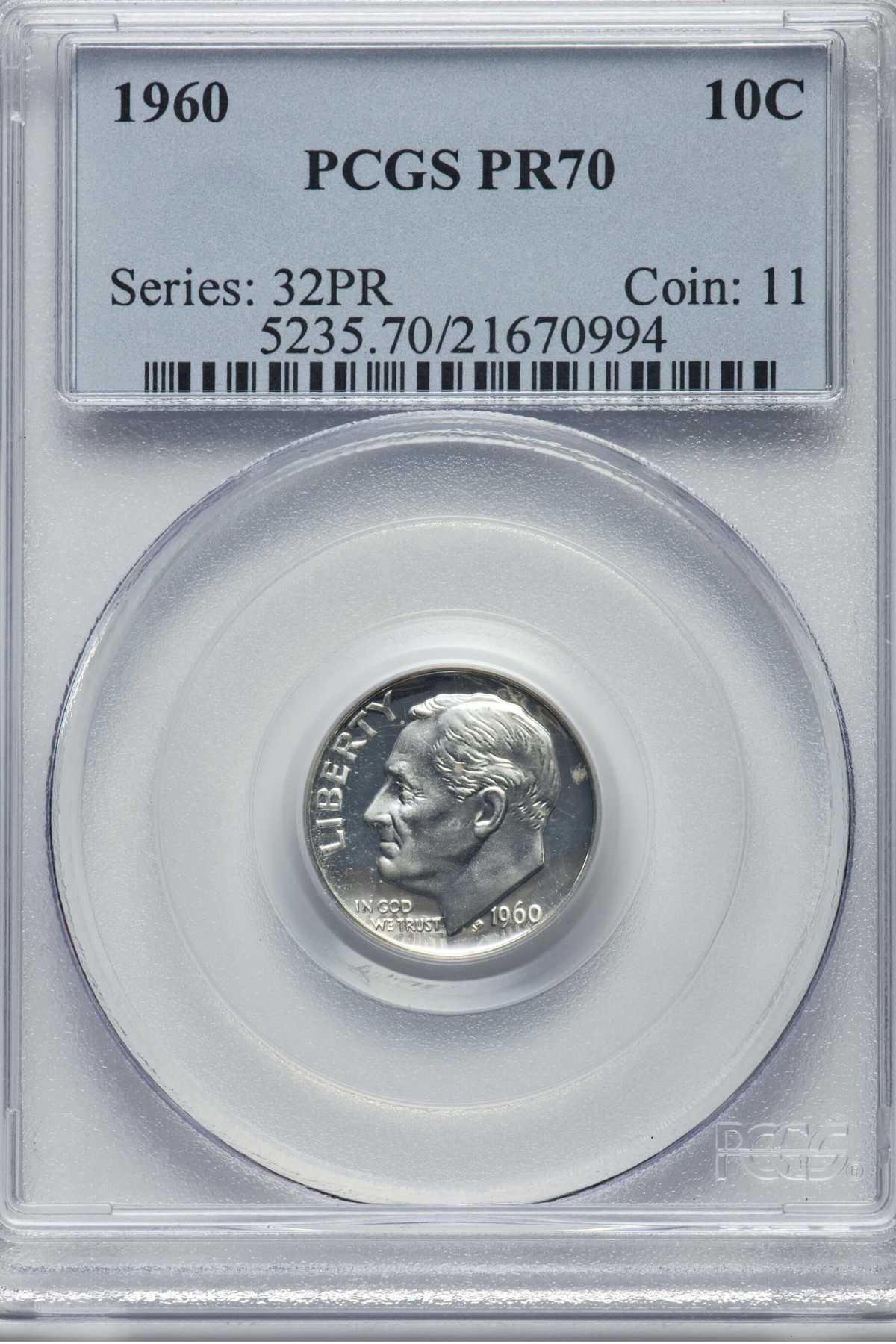
1960 Cameo Proof Dime Value
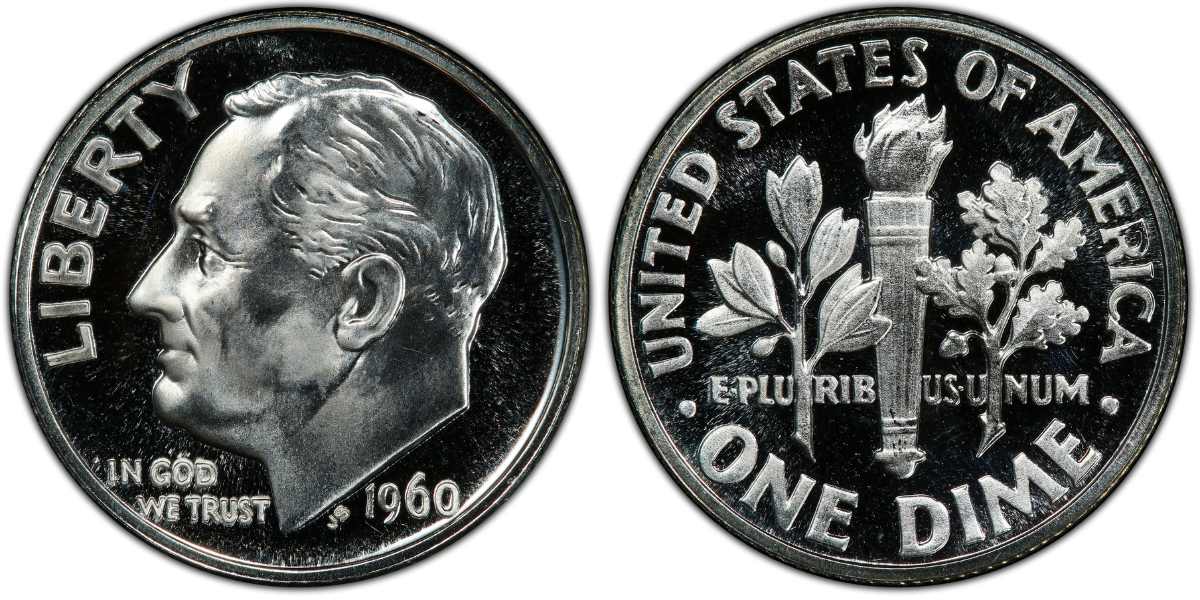
A proof coin with a shiny surface and frosted lettering and designs is known as a Cameo Proof coin. These used to be relatively difficult to come by, especially from the San Francisco Mint. However, this was not the situation in the production for this year. As a result, the price for a 1960 S Came Proof ranges from $6 to $275.00.
1960 Ultra Cameo Proof Dime Value
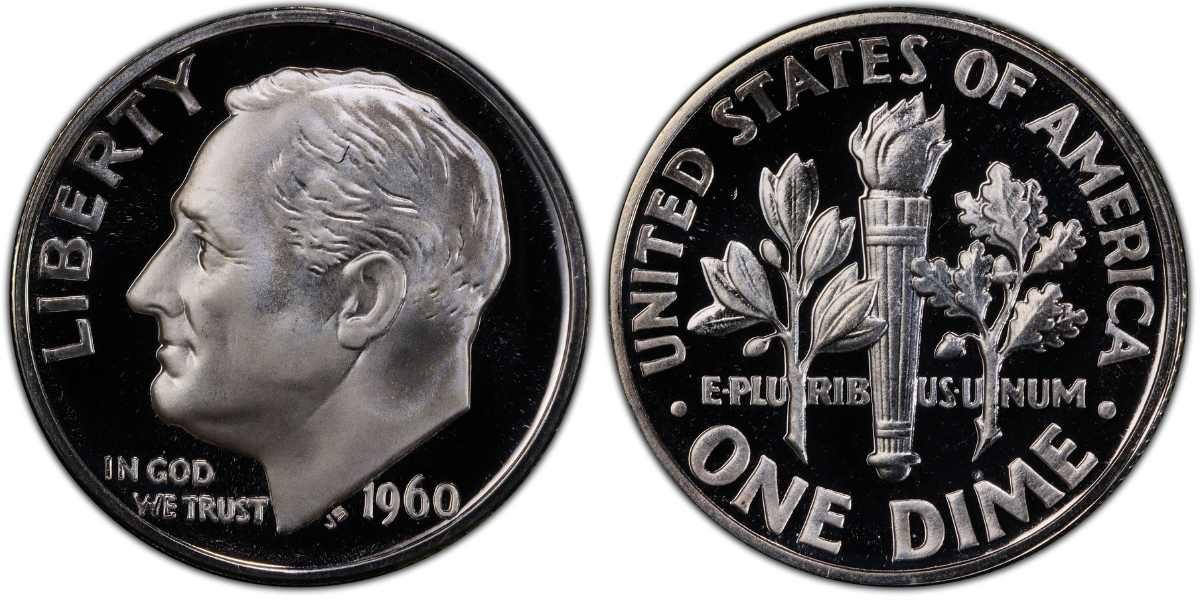
Higher than the Cameo Proof, the Ultra Cameo shows the most elevated quality strike and luster among the proof coins. It offers the highest estimated price in the market, having a price of $12 to $400.
1960 Roosevelt Dime Error Coins
The 1960 Roosevelt Dime offered many error coins in the market. The most noted errors are DDOs (Double Die Obverse), strike, and planchet errors.
1960 Dime Proof Double Die Obverse Error
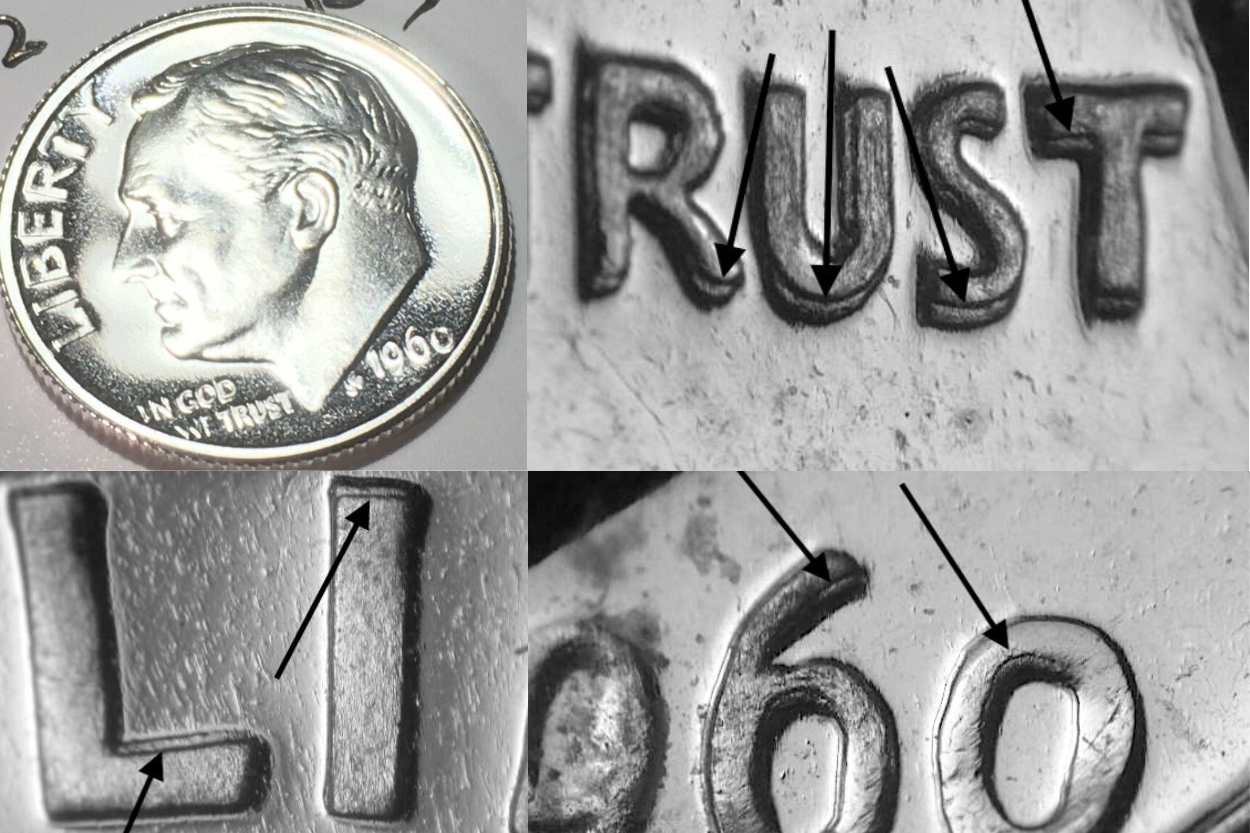
A coin with a DDO error contains a doubled die obverse, meaning the coin has two images instead of one overlapping with each other. This can make the engraving more evident and distinctive, increasing the coin’s value.
The resulting double image on the coin die is either partially or fully duplicated and may appear slightly misaligned. This is the error this 1960 Dime has. It can sell from $20 to $110.00.
1960 Proof Roosevelt Dime Doubled Die Reverse and Toning Error
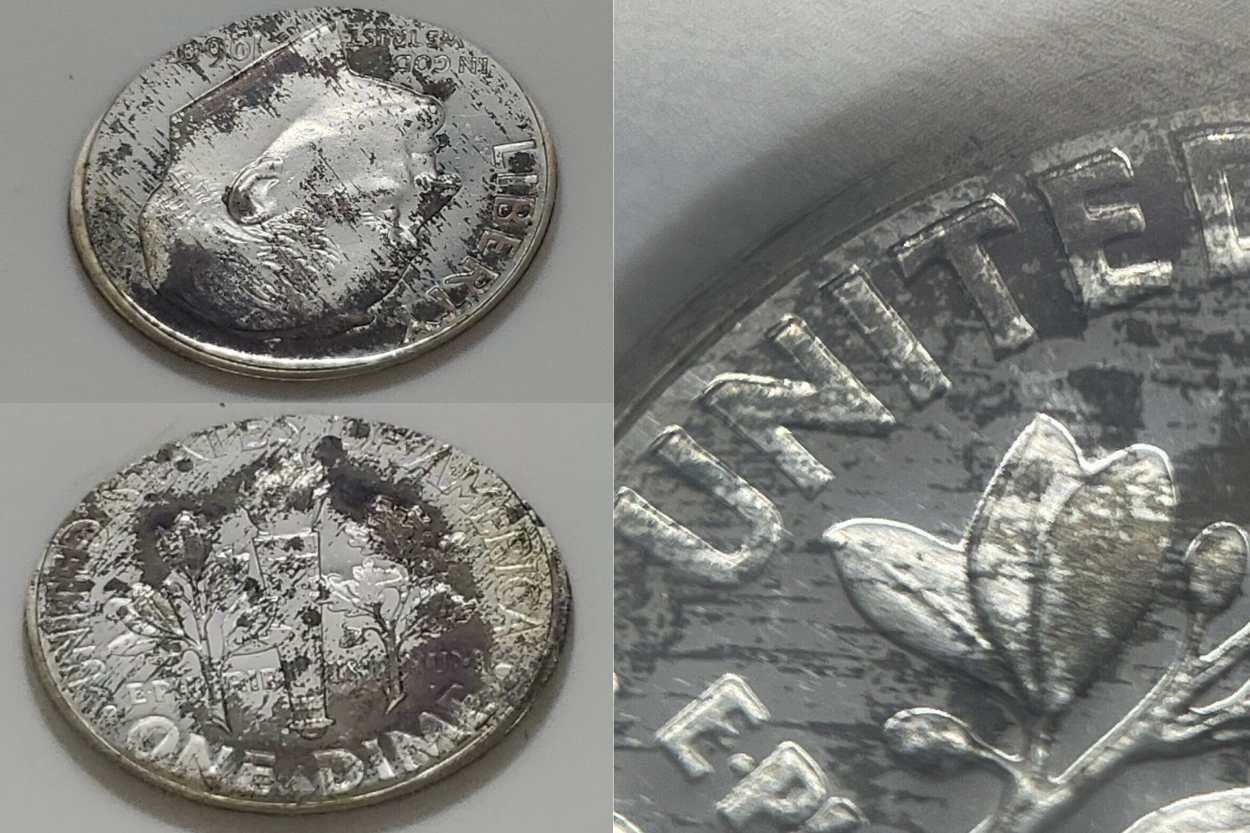
A discoloration, known as a toning error, can develop on a coin when it comes into contact with oxygen and certain chemical elements present in the air. That said, it can also happen due to the way a proof coin is shined before striking. Other than that, this 1960 MS-65 Proof coin is up for sale for $149.99.
1960 Roosevelt Dime Major Laminated Planchet Error
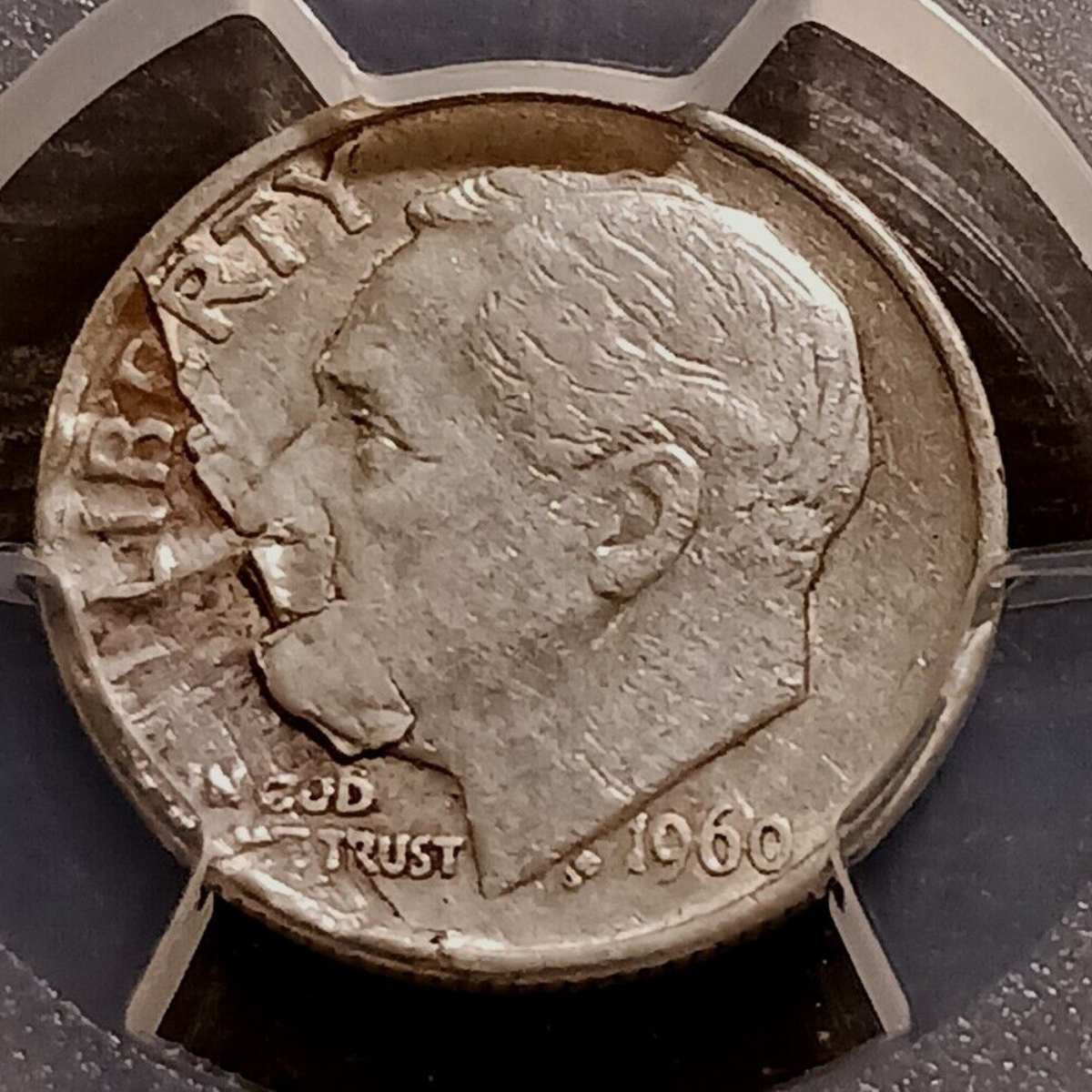
A lamination planchet error refers to an issue that can occur with a coin when its surface cracks and flakes. This happens when the metal blank contains impurities, causing the engraving to not transfer well.
As a consequence of this process, the coin may experience flaking, peeling, and cracking. This particular Roosevelt Dime shows notable cracking. It’s up for sale with a price tag of $295.
1960 Roosevelt Dime Value Grading Based on Four Conditions
Grading your coin is one of the essential factors when knowing its price. If you need clarification when grading your coin, here are some of the elements you need to look out for.
Uncirculated State
MS-60 and higher, the uncirculated grading is given to coins that are not used in any transactions. Its pristine condition is its most sought-after feature.
You will notice that the luster of the dime doesn’t show any wear. Also, the details, especially in Roosevelt’s hair, tend to wear off quickly but are still intact in the uncirculated state.
Extremely Fine State
Second to the Uncirculated, the Extremely Fine State (EF-40 to EF-50) shows a slight wear in the small details. However, some of the shine and luster are still there. Most of the coins under this grade have a limited time in circulation.
Fine State
The Fine State (F-12 to F-15) is the grade given to coins with signs of wear ─however, most of the larger engraving is distinct and noticeable. That said, the fine details, such as Roosevelt’s hair or the torch line, are not as present, if not at all.
Good State
The dime with a grading of Good State (G-4 to G-6) shows great signs of wear, especially losing most of the small details and luster. Most of this coin has been used in everyday life, making it lose most of its sought-after features.
Summary
This 1960 Dime Value Guide thoroughly examines the various factors that contribute to the worth of this notable coin. With detailed analysis and up-to-date pricing information, collectors and numismatists can make informed decisions about buying and selling these valuable coins!


Jenson is a professional numismatist, a dedicated coin collector, a graduate of the College of Business at Oregon State, a life member of the American Numismatic Association (ANA), and an overall coin nerd. He is the founder of Coin Value List.
